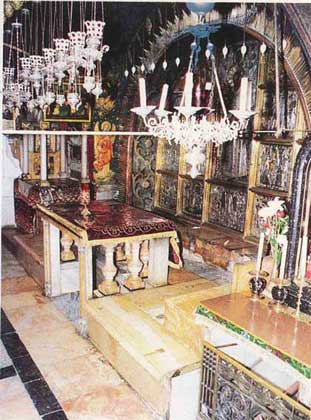6.3 Holy Shrine of Calvary, Jerusalem
The uncovered Rock of the Calvary, now visible and accessible, still required protection by some kind of covering, to prevent pilgrims from taking “souvenirs”. With almost 6.000 people visiting the site daily, this precious record would rapidly disappear. The solution was a covering, constructed in the University of Thessaloniki, of very resiliant Swiss glass, 33mm thick, strong enough to bear the weight of several persons, allowing in this way the performance of certain ceremonies on it, for example the Catholic ceremonies of Good Friday on Calvary.

The intervention in the highest and most important shrine of Christianity was done with a spirit of discretion and respect for the international principles concerning the restoration of monuments worldwide. A comparison between the Calvary before and after the operation shows that only the heavy plaques were removed, to allow visual access to the Rock, while all the historical and artistic elements of the Church remained intact. A discreet illumination lying below the new transparent cover gives an atmosphere of serenity and stimulation. The Holy Rock appears now directly to the spectator and to the pilgrim as it was in its initial form from the Early Christian period until the time of the Crusaders .